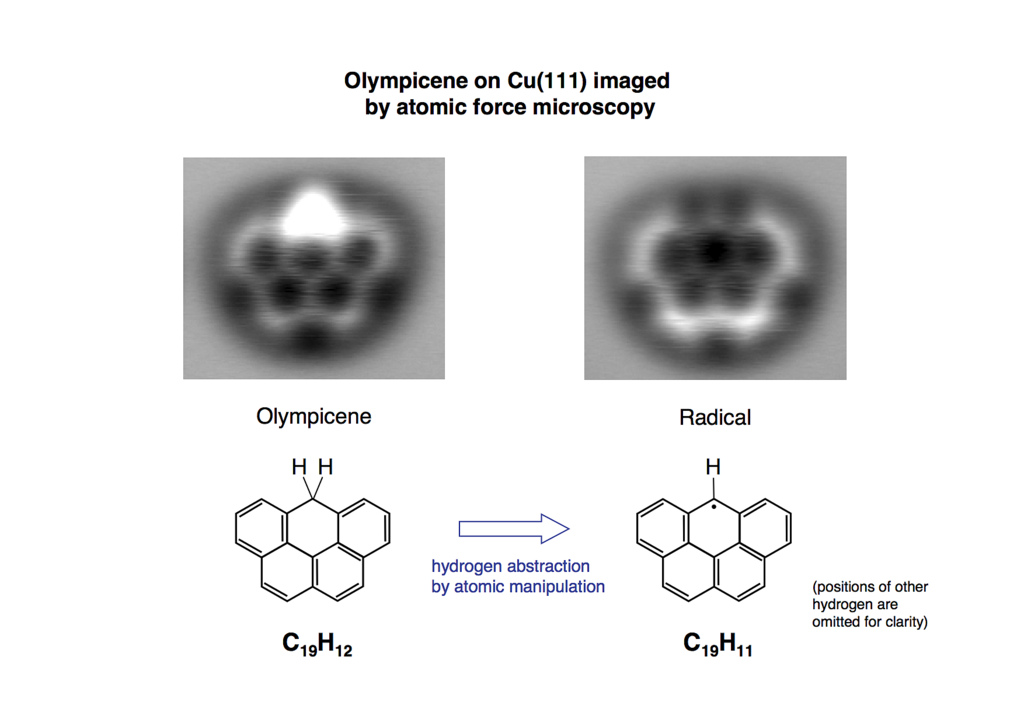Atomic force microscopy

In 2009, IBM has already made a certain breakthrough in the field of surface microscopy with the development of contactless atomic-force microscopy technology (in English this method is called AFM - you can read about it in Wikipedia, the main thing is not to be confused) by achieving control over single atoms as part of simple molecules. In the "blue giant" continued experiments on this line of research until today, and now, finally, the next results appeared - as part of a large team that brings together not only specialists of the company, but also scientists from European universities, it was possible to improve the existing methodology, modifying it to KPFM - Kelvin probe power microscopy. This technique allows you to capture the movement and distribution of charge inside the molecule, without violating its structure.
The team based in Zurich consists of researchers of the Royal Chemical Society ( RSC ), researchers at Warwick University and, of course, scientists at IBM, was able to get quite clear pictures of the synthetic molecule Olympiens (Olympicene, so named after the five rings of the symbol of the Olympic Games). The researchers were able to obtain not only pictures of individual hydrogen atoms, but also manipulate them. The team prepared a video explaining the whole process:
')
“While the AFM scanning method, shown by IBM in the past, showed the ability to take“ snapshots ”of individual atoms in molecules (and separately, as was shown in the video above - IBM letters made up of individual xenon atoms), the current study proved more extensive use of technology, ”says Leo Gross, a researcher at IBM Research Zurich team.
The uniqueness of the IBM developed AFM scanning technique is that it can take pictures of atoms and molecules without the need to collect molecules of the crystalline form, which was the first obstacle in the path of high-definition scanning. But, even more importantly, the team demonstrated the ability of the AFM scanner to trigger certain reactions, such as the formation of a facet of a molecule or the extraction of a single atom from the composition of a molecule.
This is best seen just by the example of the Olympitsen molecule, created, by and large, specifically to demonstrate the capabilities of KPFM. The photograph at the very beginning of the post clearly shows the connecting bonds between the atoms inside the molecule - especially in the place where two hydrogen atoms are attached to a synthetic molecule. In another picture, it can be seen that the same place is no longer highlighted - just for the reason that one of the hydrogen atoms was “removed” from the molecule, creating what was called the radical Olympicenes.
And although Leo Gross has no doubt that the survey and manipulations of a single hydrogen atom, in general, show the limits of application of the technique (it is not possible to operate on a scale smaller than atomic), there are many more “size” parameters that would be interesting to explore : “We want to look closely at such things as adsorption, the compound inside the molecule and the parameters of the compound, position, distance between atoms”. It is these parameters that, as a rule, determine the properties of the final substance synthesized from synthetic or modified molecules.
Naturally, this study also has far-reaching perspectives that all scientists and researchers in the group see: “We want to use a new technique to study the distribution and separation of charge inside the molecule, especially for organic light cells, where charge separation is key , as well as for molecular electronics — for example, single-molecule devices (such as, for example, LED elements), where only one electron carries functionality. The use of the combined AFM and KPFM techniques gives us tremendous opportunities to study just single-electronic devices. ”
Source: https://habr.com/ru/post/145175/
All Articles